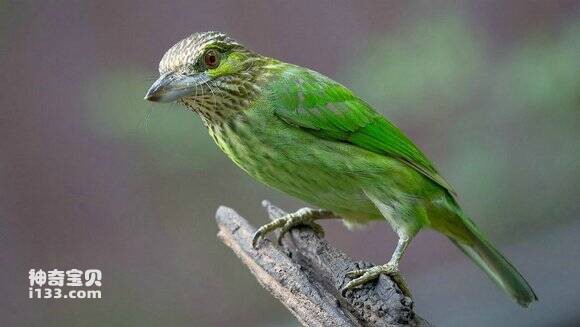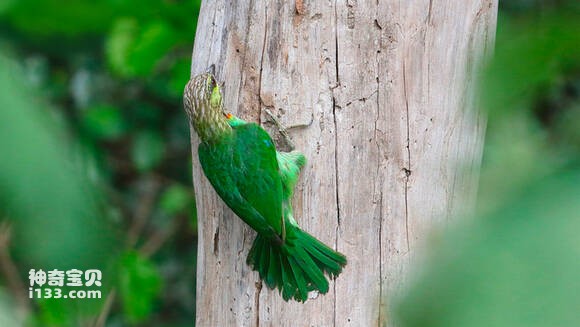Megalaima faiostricta
IUCN
LCBasic Information
Scientific classification
- name:Megalaima faiostricta
- Scientific Name:Megalaima faiostricta,Psilopogon faiostrictus,Green-eared Barbet
- Outline:Climbing birds
- Family:
Vital signs
- length:About 24 cm
- Weight:No textual research information is available
- lifetime:No textual research information is available
Feature
Distribution and Habitat
Origin: Cambodia, China, Thailand and Vietnam.
Breeding ground: Lao People's Democratic Republic.
It mainly lives in broad-leaved forests in the low mountains and plains below 1000 meters above sea level, and also occurs in open forests and secondary forests at forest margins.
Appearance
The top of the head is dark brown, the feather margin is white, and the top of the head forms a thick dark brown stripe; Undereye and ear overfeathers yellow-green, pillow brown, with yellow-green feather margin, the upper body gradually becomes bright grass green after the pillow; The back, shoulder and wings are covered with small and middle coverings with copper green; The central tail feather is green, the outer tail feather is green, the inner vexing is more brown; The primary feathers are brown, the inner vexes green, the outer vexes green, the inner vexes brown, the central with a yellowish brown spot and a white feather margin, the inner secondary feathers are all green. Lower buccal margin, chin, larynx and upper anterior neck light yellowish brown; The rest of the lower body bright grass green. The chest and flanks have broad brown stripes.
The iris is dark red, the mouth is grayish yellow, and the tip of the mouth and around the nostrils are brown. Feet and toes gray-gree
Details
Megalaima faiostricta, Psilopogon faiostrictus, foreign names Green-eared Barbet, there are two subspecies.
The yellow-striated woodpecker is a resident bird with the same habits as other species of woodpecker. It often acts alone and in pairs. After the breeding chicks have left the nest, the adult and young flock together soon after. Able to jump nimbly between tree trunks and branches with incredible speed, standing firmly on vertical tree trunks. Often hidden in the dense foliage of the trees, the sound is clear and resounding. You can make the guttural sound per-roo-roo-rook; It also makes a mellow, flute-like, rising pooouk call. It feeds mainly on plant fruits, seeds and insects.
Listed on the International Union for Conservation of Nature Red List of Threatened Species (IUCN) 2018 ver 3.1 - Not Threatened (LC).
Protect wild animals and eliminate wild meat.
Maintaining ecological balance is everyone's responsibility!








